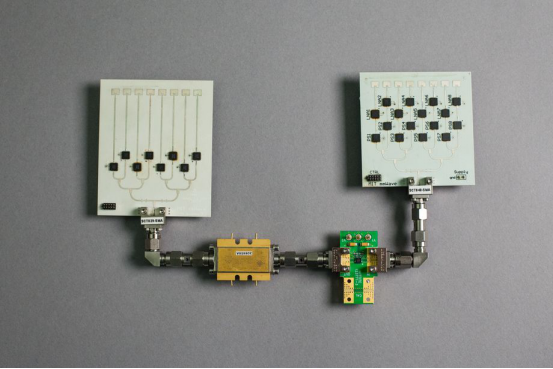
The Verge Chinese Station reported on November 29
If you want to experience high-quality virtual reality technology, whether it be Oculus Rift, HTC Vive or Sony PlayStation VR, in addition to computers and PS4 consoles, there is a problem that has to face, that is, wants to be in the virtual world. " "I can't get rid of the shackles of various cables." All data processing and transmission need to connect the virtual reality headset with the computer in a wired way.
However, recent researchers from the MIT Computer Science and Artificial Intelligence Laboratory (CSAIL) have made a new progress in the field of mobile VR that can solve this problem. This technology, MoVR, is a wireless virtual reality system solution. According to the research team, MoVR does not use wireless data transmission via Wi-Fi or Bluetooth. Instead, it uses high-frequency millimeter-wave RF currents to transfer data from computers to virtual reality helmets, faster than traditional wireless connections. The way is faster.
Although there are many ways to implement wireless virtual reality today, mobile VR devices such as Google's Daydream View or Samsung Gear VR are used to drive data processing through smart phones, or even PC manufacturers have introduced products such as VR backpacks for users. The computer is on the back of the body, but both the mobile virtual reality and the portable PC host have relatively large limitations.
First of all, the delay phenomenon is the most problem that the current virtual reality technology needs to solve. The virtual reality experience is very sensitive to the delay phenomenon, so it has high requirements on the bandwidth, and the display effect is also higher than the resolution of other products. The MIT research team stated that its millimeter-wave signal data transmission speed is fast enough to fully meet the data transmission requirements of high-quality virtual reality systems.
However, one of the biggest problems encountered in this type of millimeter-wave wireless transmission signal technology is penetration, and there must be no obstacle between the VR device and the receiver. If there is an obstacle in the middle, the signal strength will be significantly affected. . MoVR Technology To solve this problem, the team is developing a programmable "mirror" that can refract signals in all directions to the direction of the user's VR helmet, ensuring that the signal can always be sent to the receiver without obstructions.
At present, MoVR is still in the prototype development stage. The team hopes to further reduce the size of the system in the future, allowing multiple VR headsets to work simultaneously without interference in the same room. However, although this is only a concept, it provides a very good idea for the future development of virtual reality technology. (Author: Chaim Gartenberg compilation: Human)
Click to view original english
Wonderful video recommendations
ã€The relevant rights in the Chinese language of The Verge's works in the United States are owned by Tencent Corporation. Without authorization, they may not be reproduced or excerpted. 】
Litter Deodorizer,Litter Freshener,Best Litter Deodorizer,Best Litter Box Deodorizer
Ningbo HanCheng(HC) Electronic Co.,Ltd , https://www.hcwires.com
